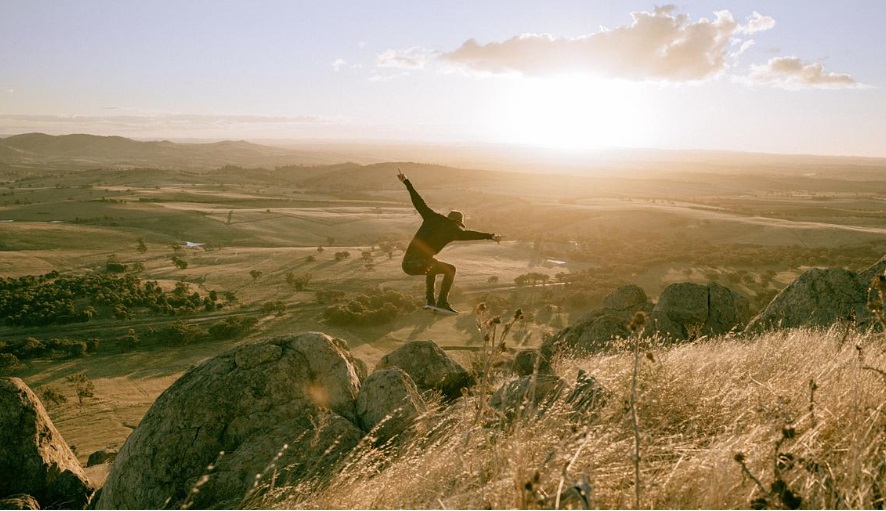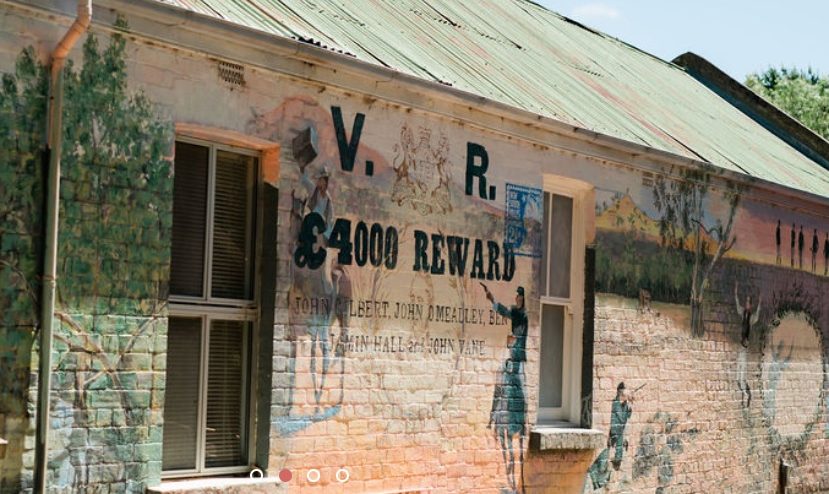
Mount Bobbara offers sensational district views, which are especially beautiful at the start of spring. Photo: riparide.
If you’ve never visited the historic village of Binalong, September affords an opportunity to see it from one of the highest spots in the region.
As we segue into spring, there’s no better place to take advantage of the panoramic green-and-gold views of the surrounding plush canola and wheat paddocks than atop Mount Bobbara, which rises above the undulating pastoral landscape like a small volcano.
Sitting about 738 m above sea level, it’s the sort of landmark, amid a flurry of peaked hills, people stare at in wonder as it towers over the small village of 543 people.
Part of the nearby “Bobbara Station”, that mountain likely has more stories to tell than any history book ever could as it witnessed the passing parade of people that began with the Ngunnawal people.
Settled by Europeans in the 1820s, down below Mt Bobbara, the small town started life as “Bennelong”, but the name was changed, at the suggestion of local residents, to “Binalong”, an Aboriginal word meaning either “under the hills, surrounded by hills, or towards a high place”.
The 1860s could be considered its historic heyday when gold of another kind abounded at nearby Lambing Flat, now known as Young.

The buildings in Binalong, which sits at the base of Mount Bobbara, reflect the colourful history of the settlement. Photo: Old Produce Store.
Binalong became an obvious stopping place for Cobb & Co coaches and thus attractive to bushranger operations.
Among them was the infamous bushranger “Flash” Johnny Gilbert, who, after a life of daring raids, was shot dead by troopers in a nearby paddock on 13 May, 1865.
There he remains, his grave well signposted on a hillside on the edge of the village along Harden Road.
Binalong was also home to one of Australia’s best-known poets, Andrew Barton “Banjo” Paterson, who spent his early childhood at “Illagong Station”, a local property located between Binalong and Yass.
His writings in later life clearly expressed his love for the local people and lifestyle of the area.
Paterson’s father’s grave can be found in the local cemetery.
Here, when not stepping up a mountainside, one can step back in time: Binalong has an old Cobb & Co inn (c1840), a police station and courthouse (c1883), a local bluestone Mechanics Institute (c1912) and old railway station (c1883).
There’s also St Patrick’s Catholic Church (c1913), which replaced the original structure of 1861, and the Anglican Church St Thomas (c1866).
It’s a town filled with characters and stories and home to the global phenomenon Eric the Caterpillar.
But without fail, each year, the Binalong Public School Parents and Carers Association (P&C) plays host to the Bobbara Walk, which isn’t so much a walk in the park as it is a walk up the mountain.
Each year, people travel from far and wide to take part in the 1.5-kilometre climb, with upwards of 250 people involved, including students from surrounding small schools.
At the top of the mountain, a radar tower helps air traffic controllers manage busy airspace above and, depending on the time of day from the top, you may see soft white ribbons of fog hiding hilltops below or streaks of white crisscrossing the sky while partaking in a barbecue and refreshments.
The walk has been set down for Sunday, 10 September, from 9 am to 1 pm and acts as a fundraiser for the school, requiring a donation entry.
Funds raised will aid in various ways for the local primary school, from buying equipment to donating books and contributing to events, camps, excursions and other things the budget did not stretch to.
The P&C has helped fund some school ground improvements with new lawns, trees, and cement walkways.
While the walk can be steep in parts, the P&C will provide transportation to the top for $10 a person for those who can’t make the trek themselves.
If you drive from Yass to Harden, you’ll see a triangle peak appear shortly before passing through Binalong, and signposts will lead you to the start of the walk.
There’s plenty to see in Binalong, so make it a day trip by sussing out the other tourist spots such as The Old Produce Store.







